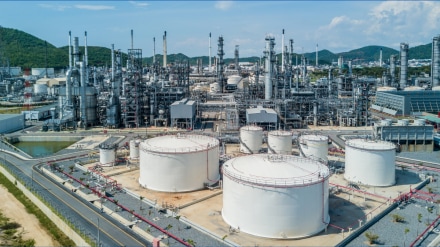India’s liquefied petroleum gas (LPG) market remains heavily import-reliant, with overseas supplies meeting 55-60 per cent of national demand over the past decade despite incremental growth in domestic production, Crisil Intelligence said.
A new long-term India-US LPG agreement, covering 2.2 million tonnes per annum, marks a significant diversification move, reducing exposure to traditional Middle Eastern suppliers, it said. However, landed costs, particularly freight, will be a key determinant of oil marketing companies’ near-term economics.
India’s LPG consumption
LPG consumption rose to about 31.3 million tonnes in FY25, up from 21.6 million tonnes in FY17, and is expected to reach 33–34 million tonnes in FY26. Household penetration continues to expand, with Pradhan Mantri Ujjwala Yojana (PMUY) users increasing their average annual refill rate to about 4.5 cylinders in FY25 from 3.9 in FY17.
Non-PMUY households have maintained stable refill levels of 6-7 cylinders a year over the past five years. Commercial and industrial use now accounts for roughly 16 per cent of the total demand, up from about 10 per cent in FY17, driven by uptake in food services, institutional kitchens and small manufacturing clusters.
Domestic LPG output rose modestly to about 12.8 million tonnes in FY25 from 11.2 million tonnes in FY17, but supply continues to lag demand growth. Import volumes climbed to 20.7 million tonnes in FY25 from 11.1 million tonnes in FY17, keeping India’s import dependence at 60-65 per cent.
The structural supply gap is expected to persist through FY26-FY28, as refining additions will bring only marginal improvements in LPG yields.
India’s LPG import partners
The Middle East remains India’s dominant source, accounting for 91-93 per cent of FY25 imports (UAE 41 per cent, Qatar 22 per cent, Saudi Arabia 15 per cent, and Kuwait 15 per cent). This concentration exposes India to regional supply disruptions and limits scheduling flexibility.
The US long-term supply deal introduces meaningful geographic diversification, Crisil said, adding that the arrangement provides an additional, geopolitical risk-mitigating corridor and expands optimisation levers in India’s import basket.
Stating that cost dynamics will vary depending on origin, it said Middle Eastern cargoes track the Saudi Contract Price (CP), while US shipments follow Mont Belvieu benchmarks, where freight constitutes a larger share of delivered cost.
Both benchmarks have recently softened – Saudi CP touching its lowest level since August 2023 and Mont Belvieu prices easing with seasonal trends – giving Asia-Pacific importers, including India, more favourable sourcing options.
With the US tranche positioned as a potential long-term anchor, India’s LPG sourcing profile is evolving into a more diversified and resilient framework. If volumes under the new deal flow consistently and scale over time, the arrangement could strengthen India’s energy security and reduce systemic reliance on any single region.
